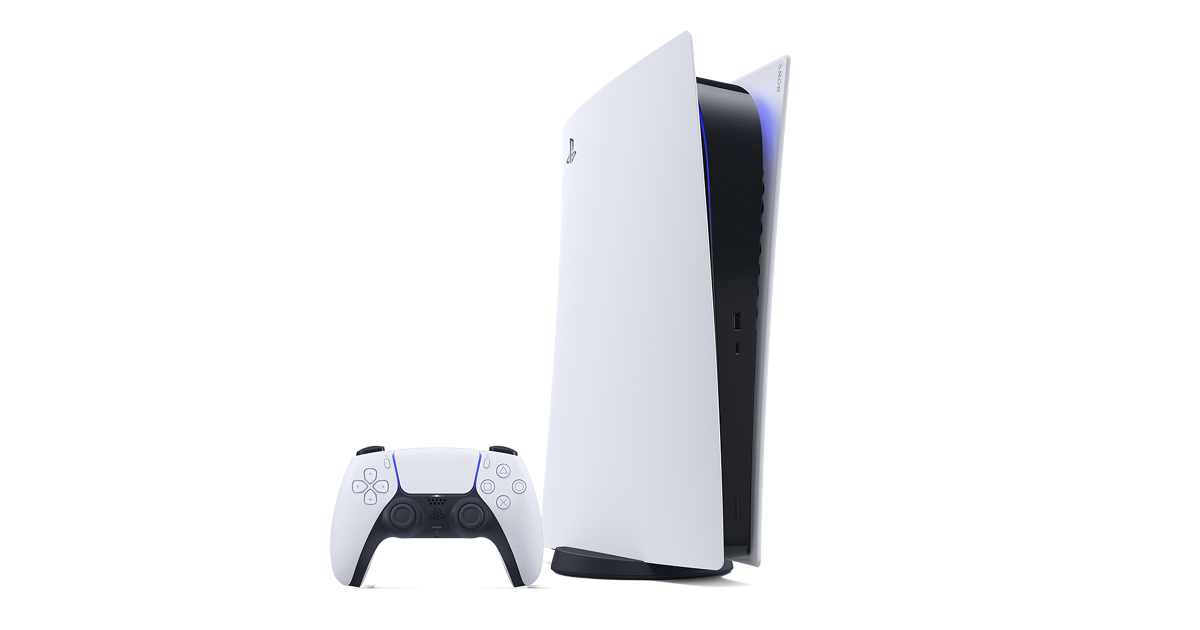If you press the power button on your PS5 and nothing happens, begin with these basic troubleshooting steps before moving on to more complex solutions. First, ensure that the power cable is securely connected to both the PS5 and a functioning wall outlet. If possible, try using a different outlet. Additionally, if you’re using a power strip, make sure it is turned on and working properly.
If your PlayStation 5 (PS5) won’t turn on, you can try these steps:
- Manually restart: Press and hold the power button for 15 seconds
- Power cycle: Unplug the power cord, wait 30 seconds, plug it back in, and try turning on the console
- Use a different power source: Try plugging the PS5 into a different outlet or power strip
- Use a different power cable: Try using a different power cable, such as one from an older console
- Update the system software: If you can boot into Safe Mode, download the latest system software and install it manually
- Reset your PS5: Resetting your PS5 in Safe Mode will restore the system to factory settings and erase your game save data
- Contact PlayStation Support: You can contact PlayStation Support or visit a Sony store to have your PS5 diagnosed and repaired
Some common reasons why a PS5 might not turn on include: Power settings, Overheating, Faulty power cable or power supply, and Software glitches or system errors.
Troubleshooting Your PlayStation 5 Power Issues
How To Turn On/Off A PS5
The easiest way to turn on your PS5 console is to press the PS button in the middle of the DualSense controller. This will wake up your PS5 if it’s asleep or turn it on if it’s off.
To Turn off the PS5 with the PS5 Dualsense controller, press the PS button to bring up the bottom menu and select the power symbol to turn it off.
Power Cycle Your PS5
Sometimes, a simple restart can resolve power issues. Unplug the power cable from the PS5 and wait for about 20 seconds. Then, plug it back in and press the power button. This might kickstart your console back to life.
Try a Different Power Cable
If your PS5 still won’t turn on, try using a different power cable. Sometimes, a faulty cable can prevent the console from receiving power. If you have another PS5 cable or a compatible cable from a different device, give it a try.
Check the Power Supply Unit (PSU)
The PSU is the brick-like device that connects the power cable to your PS5. Make sure the light on the PSU is on. If it’s off or blinking, it could indicate a problem with the PSU itself. You can try unplugging the PSU, waiting a few minutes, and plugging it back in.
Insert a Disc
If you have the standard PS5 with a disc drive, try inserting a game disc. Sometimes, this can trigger the console to turn on. If you have a PS5 Digital Edition, this step won’t be applicable.
Boot in Safe Mode
If none of the above solutions work, try booting your PS5 in safe mode. To do this, press and hold the power button for about 15 seconds until you hear a second beep. Then, connect your controller via USB and press the PlayStation button. In safe mode, you can try updating the system software or rebuilding the database, which might resolve the power issue.
Contact PlayStation Support
If your PS5 still refuses to turn on, it’s time to seek professional help. Contact PlayStation support and explain the issue. They can guide you through further troubleshooting steps or arrange for a repair if necessary.
Table of Quick Fixes
| Solution | Steps |
|---|---|
| Check power connections | Ensure the power cable is securely plugged into both the PS5 and a working outlet. |
| Power cycle | Unplug the power cable, wait 20 seconds, and plug it back in. |
| Try a different cable | Use a different PS5 power cable or a compatible cable from another device. |
| Check the PSU | Ensure the light on the PSU is on and try unplugging and replugging it. |
| Insert a disc (Standard PS5 only) | Insert a game disc to trigger the console to turn on. |
| Boot in safe mode | Press and hold the power button for 15 seconds until you hear a second beep, then connect the controller and press the PlayStation button. |
| Contact PlayStation support | If all else fails, seek assistance from PlayStation support. |
Preliminary Checks
When your PS5 won’t power on, starting with some basic checks can often pinpoint the issue. Ensuring that all cables are secure and the power source is reliable are crucial first steps.
Inspect Power Cables
First things first, confirm that the PS5 power cable is not damaged and is firmly connected to both the console and your wall outlet. If any wear or tear is visible, replace the cable immediately to avoid further complications.
- Secure connection: Double-check that the power cable fits snugly into your PS5 and wall outlet.
- Cable condition: Examine the cable for any signs of fraying, cuts, or other damage.
Assess the Power Outlet
Power source matters, so plug a different device into the same outlet to test its reliability. If the outlet is faulty, try another one or consider using a surge protector for consistent power supply and better protection.
- Testing the outlet: Use another device to confirm the outlet’s functionality.
- Surge protector usage: If a power strip or surge protector is in use, ensure it’s turned on and functioning well.
Examine External Cabling
Connection quality is key, so it’s important to check not just the power cables, but also other connections like the HDMI cable. A secure and undamaged HDMI cable ensures your PS5 can communicate with your display without any hitches.
- HDMI connection: Ensure the HDMI cable is properly connected to both the PS5 and your TV or monitor.
- Cable integrity: Look over your HDMI cable as you did the power cable, and replace it if there’s any visible damage.
Proceed with care as you check these aspects. Sometimes, the simplest solutions, like changing a cable or outlet, will bring your PS5 back to life.
Intermediate Troubleshooting
If your PS5 won’t spring to life, the following steps are more than just basic checks—they’re the bridge between easy fixes and advanced solutions. Here’s how you can further troubleshoot the issue.
Perform a Power Cycle
Resetting the power state of your console can resolve temporary glitches. Power cycling involves turning off your PS5 completely, then disconnecting it from the power source. Wait for at least one minute before reconnecting and attempting to turn it on. This process clears out the console’s RAM and can often solve power-related issues.
Attempt to Reboot in Safe Mode
Safe Mode is designed for troubleshooting and resolving issues that standard operation can’t fix. Hold down the power button until you hear two beeps: one when you first press and another seven seconds later. Connect your controller with a USB cable and press the PS button. Here, you can reset or update the system software, which may resolve the problem, but don’t forget that resetting your PS5 might erase your data, so use it as a last resort.
Check for Overheating Issues
Overheating can cause your console to shut down to protect itself. Ensure your PS5 is in a well-ventilated area and isn’t covered by objects that could trap heat. Dust that accumulates can block cooling fans. Cleaning the fans and vents regularly helps to prevent overheating. If your PS5 feels unusually warm or refuses to turn on, let it cool down for a while before restarting.
Detailed Diagnosis
When your PlayStation 5 won’t power up, a thorough check of internal and external factors is crucial. Let’s pinpoint the exact issue, whether it’s hardware, software, or connection related.
Inspect for Internal Hardware Issues
First, ensure that the console itself hasn’t incurred any visible damage which might cause a malfunction. Listen for unusual sounds that could indicate a hardware problem inside the PS5. If the LED light fails to turn on or behaves erratically, it could be a sign of internal hardware issues. Keep the PS5 in a well-ventilated space to prevent overheating, which is another common cause of hardware troubles.
Consider System Software Problems
If hardware seems fine, software glitches may be at play. Bugs can cause the system to freeze. Try booting the PS5 in safe mode to diagnose the issue. To do this, hold down the power button until you hear two beeps, indicating safe mode. From there, you can rebuild the database or even attempt a factory reset if necessary—note that a reset will erase your data.
Examine HDMI and Display Connections
Lastly, check your HDMI and display cable connections. Ensure the HDMI cable is securely connected to both the PS5 and the display. Sometimes, merely switching out the HDMI for a new one can solve the problem. If the screen remains black while the console seems to be powered on, the issue might stem from the TV or monitor. Ensure you’re on the correct input channel and that the display itself isn’t the problem.
Software Recovery Steps
In the event that a PlayStation 5 console isn’t powering on, there are a couple of software recovery tactics one can undertake. These steps involve updating the system software and performing a factory reset, if necessary.
Update System Software
To ensure a PlayStation 5 runs smoothly, it might need a system software update. This can sometimes fix software issues that prevent the console from turning on. First, a USB drive will be necessary.
Prepare the USB Drive:
- Format the USB drive to FAT32.
- Create a folder named “PS5” on the drive.
- Inside that folder, create another folder named “UPDATE”.
Download the Update:
- Visit the official PlayStation website to download the latest PS5 update file.
- Save the file as “PS5UPDATE.PUP” inside the “UPDATE” folder.
Install the Update:
- With the PS5 powered off, insert the USB drive into the console.
- Hold the power button for about 7 seconds until you hear a second beep to start the console in Safe Mode.
- Choose “Update System Software” and select the USB drive.
Following these steps should update the system software and potentially resolve the issue.
Factory Reset Your PS5
If updating the system software doesn’t solve the problem, a factory reset might be necessary. Warning: This will erase all data on the console and restore it to factory settings.
Enter Safe Mode:
- Turn off the PS5 completely.
- Press and hold the power button, releasing after the second beep.
Perform the Factory Reset:
- Select “Reset PS5” from the Safe Mode menu and follow the on-screen instructions.
After the factory reset, the PS5 will restart as if it were new. This can help solve more persistent software or hardware issues by returning everything to its original state.
Physical Maintenance
Before digging into the digital issues that might cause a PlayStation 5 to malfunction, it’s crucial to not overlook basic physical maintenance. Keeping the console clean and ensuring it’s free from physical obstructions can prevent and solve a surprising number of power-related problems.
Clean the Console
To maintain the PlayStation 5’s performance, regular cleaning is a must. Dust and insect buildup can hinder the console’s ability to function by clogging vents and causing it to overheat. Start by gently wiping the exterior with a soft, dry cloth. For the vents and hard-to-reach places, use a can of compressed air to blow away any hidden debris. Avoid using any liquids directly on the console to prevent damage.
Check for Disc Drive Obstructions
The optical disc drive can become a magnet for issues like stuck game discs or foreign objects that children might have inserted. Carefully inspect the drive for any visible obstructions. When attempting to insert a disc, ensure it’s clean and free of significant scratches which could affect its ability to be read. If you encounter a bug with the disc drive not taking in or ejecting discs properly, avoid using force and instead look for professional repair assistance. Regularly clearing out these openings can help keep the PlayStation 5 in good running order.
Resolving Persistent Problems
When your PlayStation 5 isn’t powering on, and basic troubleshooting fails, it might be time to seek professional services or consider warranty options.
Seek Professional Repair
If your PS5 remains unresponsive, reaching out to a professional service center could resolve the issue. Asurion and other authorized repair providers have the tools and expertise to diagnose and fix the problem. Before sending your console for repair, make sure to:
- Backup your data if possible, to avoid loss.
- Gather documentation, such as proof of purchase and previous service records.
Explore Warranty and Replacement Options
Your PlayStation 5 comes with a limited hardware warranty from Sony. This warranty typically covers repairs or replacement of your console if it’s defective. Here’s what to do:
- Check the warranty status of your PS5.
- Look for your receipt or confirmation email as proof of purchase.
- If under warranty, contact PlayStation support to initiate a repair or replacement claim.
- Be prepared to describe the issue and provide any requested information.
Note: If the warranty has expired, Sony still offers paid repair services, or you may opt for third-party providers.
Operational Guidance
When you encounter issues with your PlayStation 5 not powering up, two proven approaches can increase the likelihood of restoring function without expert intervention.
Regularly Power Cycle the Console
Power cycling helps maintain your PS5’s health and can solve many temporary glitches. To do this safely:
- Turn off the console by pressing the power button.
- Unplug all cables from the back for at least 30 seconds.
- Reconnect them and turn on the PS5.
This process can resolve issues like a blinking white light, and it’s a form of a manual reboot that can clear up minor software problems.
Safeguard the Console from Dust and Insects
Keep your PS5 in a clean area because dust and insects can cause damage leading to power issues. Follow these steps:
- Regularly clean around the console area.
- Make sure to unplug the console before cleaning.
- Inspect and clean ports and connectors to remove any dust that could disrupt the power connection.
By maintaining a clean environment, you can lower the risk of overheating and power issues that might otherwise require a reset of the PS5 to fix.
Frequently Asked Questions
When your PS5 isn’t powering up as expected, it’s important to follow a clear set of steps to tackle the problem.
How can I troubleshoot a PS5 that won’t power up?
First, check your power cable and ensure it’s firmly connected to both the PS5 and the power outlet. If there’s no damage and the connections are secure, try a different power outlet to rule out outlet issues.
What steps should I take if my PS5 turns off unexpectedly and won’t turn back on?
Unplug the console and wait a minute before re-plugging it. Press the power button for about 15 seconds until you hear a couple of beeps. This may reset any temporary glitches that are causing the issue.
How do I resolve an issue where my PS5 is beeping but not turning on?
If your PS5 beeps but doesn’t turn on, the issue might be with the console’s power supply or software. Disconnect all cables and connect them back after a few minutes, then try to power it on again. If it persists, contacting Sony for assistance may be the next step.
What could be causing my PS5 to display a blue light but remain unresponsive?
A blue light usually indicates a software issue. Try rebooting your PS5 in Safe Mode by holding the power button for about seven seconds until you hear a second beep. Then connect a controller using a USB cable and press the PS button.
What should I do if my PS5’s power button appears unresponsive?
You might need to reset the console. Unplug the console, wait a few minutes, and then plug it back in. If this doesn’t work, it could be a hardware issue that requires professional repair or service.
Where can I find instructions for dealing with PS5 power supply problems?
For official troubleshooting guides and steps, or to check if your PS5 is eligible for a repair under warranty, visit the PlayStation support website. They have a diagnostics tool that can be very helpful for power-related issues.





